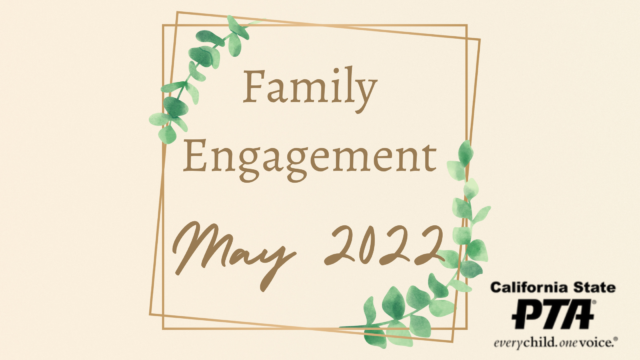by California State PTA Family Engagement Commission Consultant, Kathleen Fay
As events and programs for the new school year get underway, your PTA will be more successful and your plans will go more smoothly if your leaders have a solid understanding of some basic laws that govern schools in California. It’s particularly helpful to be familiar with fairly recent laws related to student rights.
Sharing this information with parents generally also makes sense. Parents who understand students’ rights can be more effective advocates for their children.
A safe, secure environment conducive to learning
Students have a right not to be subjected to harassment, sexual harassment, bullying or discrimination, indignity, injury, or violence. California students are protected from discrimination or harassment based on sexual orientation or gender identification, according to state law. California law further states that everyone in public schools should have “equal rights and opportunities in the educational institutions of the state.” (California Education Code Section 200.)
Since 2014, California law has also specified that “a pupil shall be permitted to participate in sex-segregated school programs and activities, including athletic teams and competitions, and use facilities consistent with his or her gender identity, irrespective of the gender listed on the pupil’s records.” (California Education Code Section 221.5(f) )
No student fees to participate in educational activities
The California Constitution provides for a free school system. Based on California Education Code that means a pupil enrolled in a public school shall not be required to pay a pupil fee for participation in an educational activity. What does this rule include?
…even for extracurriculars –
Schools cannot require students (or their parents) to pay a fee to participate in an educational activity that is a fundamental part of their education, including both curricular and extracurricular activities, and regardless of whether the class or activity is elective or compulsory, or is for credit.
…even for materials/equipment –
Pupils cannot be required to pay a security deposit, or other payment, to obtain a lock, locker, book, class apparatus, musical instrument, uniform, or other materials or equipment; nor may a pupil be required to make a purchase to obtain materials, supplies, equipment, or uniforms associated with an educational activity. A fee waiver policy shall not make a pupil fee permissible.
…even for supplies –
All school supplies, materials, and equipment needed to participate in educational activities shall be provided to pupils free of charge. This includes materials for art classes, cloth for sewing classes, wood for carpentry, gym suits for physical education, and any bluebooks or special paper used for exams or reports. A fee cannot be charged for a cap and gown to participate in the high school graduation ceremony.
In short, parents cannot be required to pay a fee or perform service hours as a condition of their child’s participation in educational activities.
Some charges are allowed
The law does allow schools to charge fees for some activities, which are specifically defined:
- Reimbursement for direct costs of materials provided to a pupil for property the pupil has fabricated from such materials to take home for his/her own possession and use, such as wood shop, art, or sewing projects kept by the pupil (although materials necessary for class participation must be provided)
- Charges for safety glasses, for a pupil to keep (except those used in specified courses or activities involving the use of hazardous substances likely to cause injury to the eyes)
- Certain technology equipment not used as an essential part of the educational program
- Food that is not part of the free and reduced-price meal program
- Replacement costs for school district property that is lost or willfully damaged
- Field trips, so long as no pupil is prevented from making the field trip or excursion because of lack of sufficient funds
- After-school education and safety program fees, so long as fees are waived for homeless youth, foster youth, or pupils eligible for free or reduced-price meals
- Fees for outdoor science school camp programs, so long as no pupil is denied the opportunity to participate because of non-payment of the fee
- Athletic team insurance, so long as there is a waiver for financial hardship
- Test fees for certain specialized examinations
- Adult education class fees, as specified
A number of federal laws also protect students’ rights
- Section 504 requires that school districts provide a free appropriate public education (FAPE) to qualified students in their jurisdictions who have a physical or mental impairment that substantially limits one or more major life activities.
- Title VI prohibits discrimination on the basis of race, color, or national origin in the assignment of students to schools or classes. It also prohibits discrimination in ability grouping or tracking students.
- Title IX protects against discrimination based on sex (including sexual harassment). In addition, Title IX protects transgender students and students who do not conform to gender stereotypes. State law also prohibits discrimination based on gender (sex), gender expression, gender identity, and sexual orientation.
The Federal civil rights laws that the US Department of Education Office for Civil Rights (OCR) enforces, including Title VI, Title IX, Section 504, and Title II, make it unlawful to interfere with any right or privilege secured by these laws. This means that a school or school district must not retaliate against someone who has brought civil rights concerns to a school’s attention, including by making a formal or informal complaint, testifying, or participating in an OCR investigation.
Knowing students’ rights, and making sure families know them as well, is an important way PTA can help to ensure that every child obtains a free and fair public education in California. It’s part of the PTA mission and supports the well-being of all children and families.




